Affirm Therapy
Connecting LGBTQ+ individuals with LGBTQ+ affirming therapists with personalised matching and resources
Time Period
2 months
Role
UX designer
UX researcher
Team
Solo project
Methods
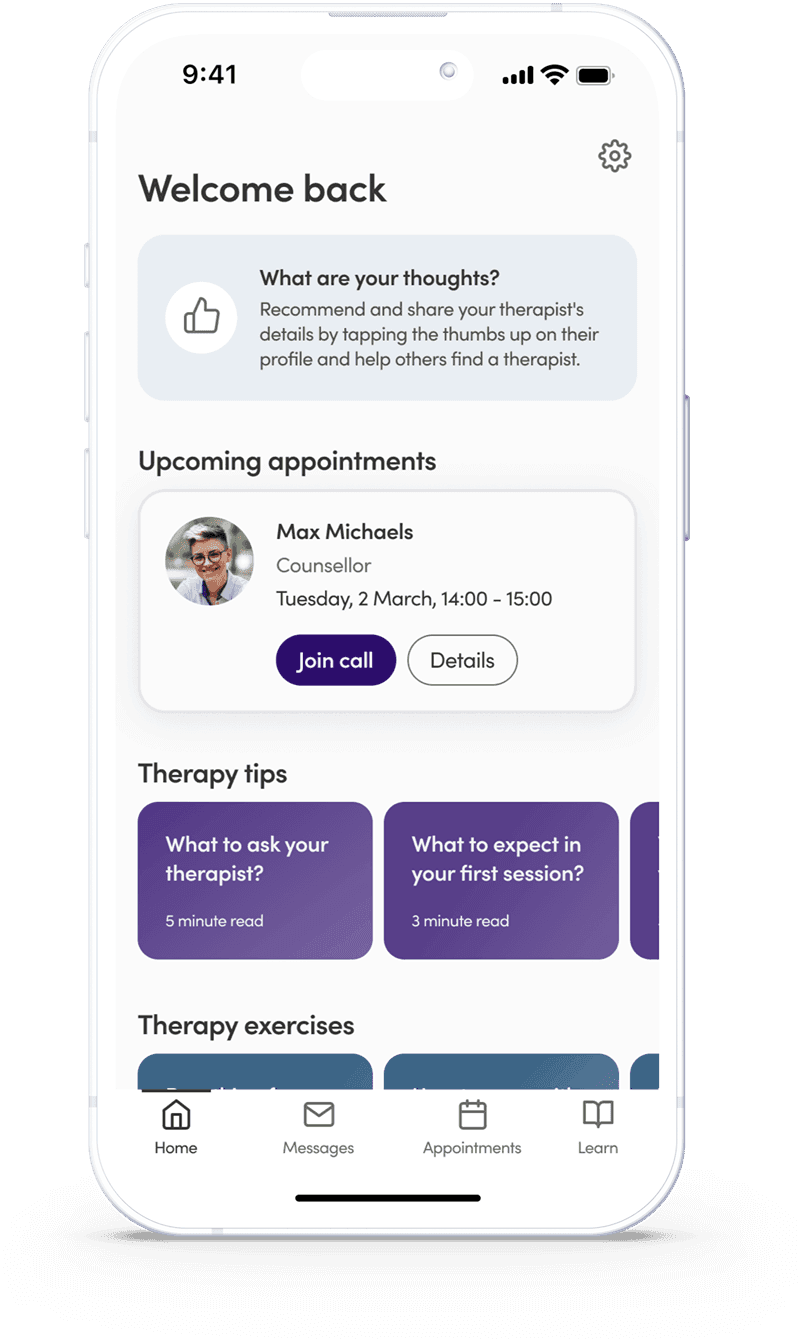
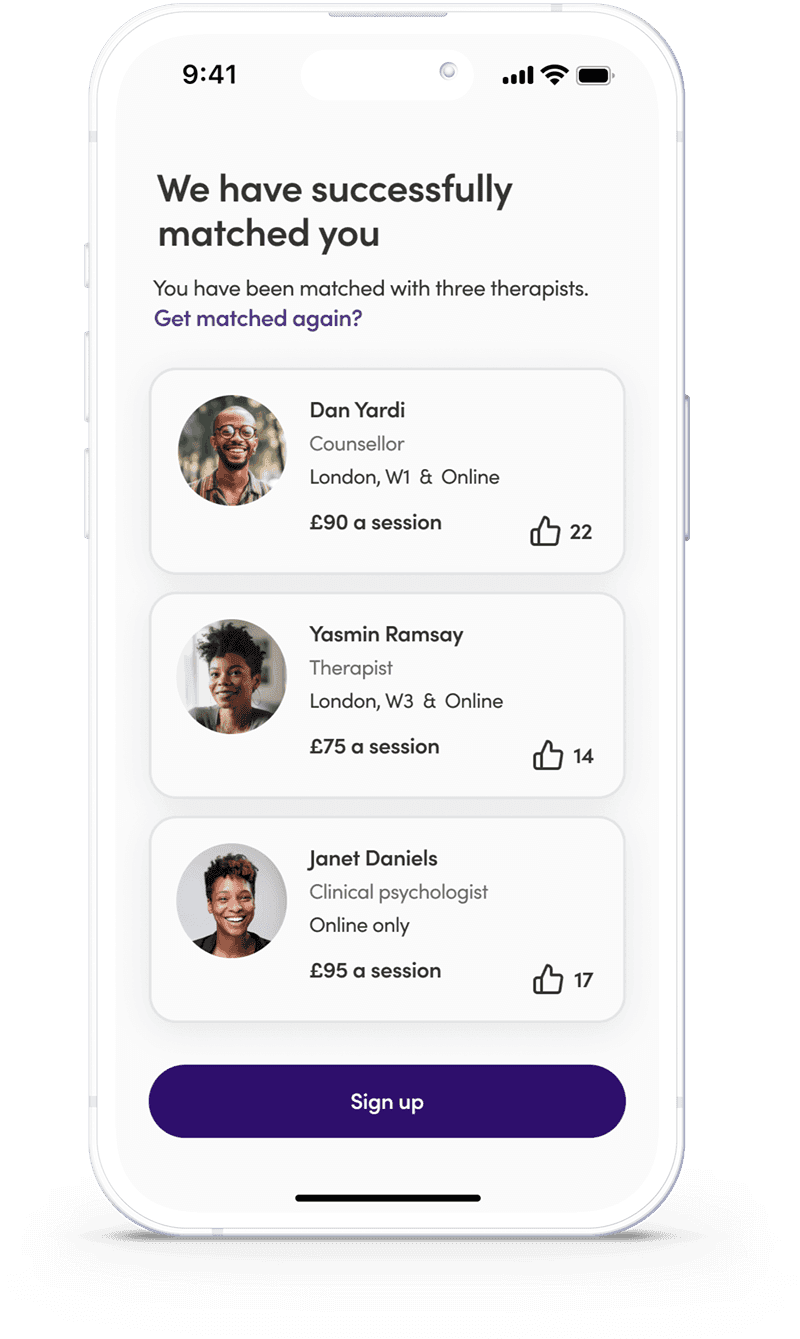
Summary
As mental health issues increase within the LGBTQ+ population, my goal was to create an app that enables quicker connections to therapists tailored to each individual's preferences
PROBLEM
LGBT+ people struggle to find therapists who meet their preferences
As a mental health worker, I witnessed members of the LGBTQ+ community struggling to find a therapist and often facing long wait times. This experience inspired me to explore how LGBTQ+ people find therapists, their preferences around therapy, and how to make the process of finding a therapist less overwhelming and stressful.
SOLUTION
Personalise the process and provide resources
Skip to solution
Based on the insights I devised three solutions, a user-friendly therapist matching flow for specifying preferences, integrated educational resources about therapy, and a feature to recommend and share therapist profiles.
Research
LITERATURE REVIEW
71% of LGBTQ+ people prefer an LGBTQ+ affirming therapist
To understand the scope of the problem I conducted a literature review and found that LGBTQ+ individuals prefer working with LGBTQ+ affirming therapist due to concerns about discrimination and lack of understanding.
LGBTQ+ people experience
long wait times to see a therapist

LGBTQ+ people experience
discrimination from a health professional
COMPETITIVE ANALYSIS
Similar apps have limited support for user preferences
I analyzed therapy apps to understand how users can customize their therapist preferences. I found that most provide limited options for users when matching them with a therapist. Users of these apps are not always able to specify important preferences such as the sexuality or ethnicity of the therapist, or the type of therapy.

Talkspace
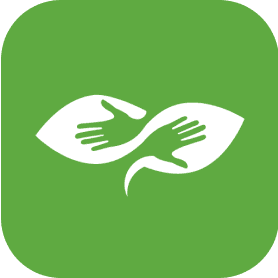
BetterHelp

Pride Counselling
SEMI-STRUCTURED INTERVIEWS
All interviewees had numerous preferences when searching for a therapist
In order to gain insight into how LGBTQ+ individuals choose their therapists, I conducted interviews with 5 individuals who identify as LGBTQ+. The interviews were transcribed using Dovetail, and 4 common themes were identified.
User preferences
01
It is crucial for users to find an LGBTQ+ therapist who accepts their identity and also meets their other preferences.
Recommendations
02
Finding a therapist can be stressful, recommendations through a friend or service can help narrow the search.
Lack of resources
03
To avoid going through multiple therapists, some users would like information about therapy.
Time taken
04
On average it took users up to a month to find a therapist that matched their preferences.
Insights and Solutions
HOW MIGHT WE?
How might we help connect users to a therapist who meets their preferences?
After synthesising the research data, I formulated a "How Might We" (HMW) question, which guided the development of solutions for each insight.
Insight One
Users prefer finding a therapist through an LGBTQ+ service or recommendations

Recommendation request to help
other users find a therapist
SOLUTIONS
01
Recommend and share therapist details with other people
02
Manually search for a therapist or be matched.
HYPOTHESIS
01
User recommendations boost the app’s social proof and can help in therapist selection
02
Offering various ways of finding a therapist can engage different users
Insight Two
Users want therapists who are LGBTQ+ friendly, but they also have other preferences
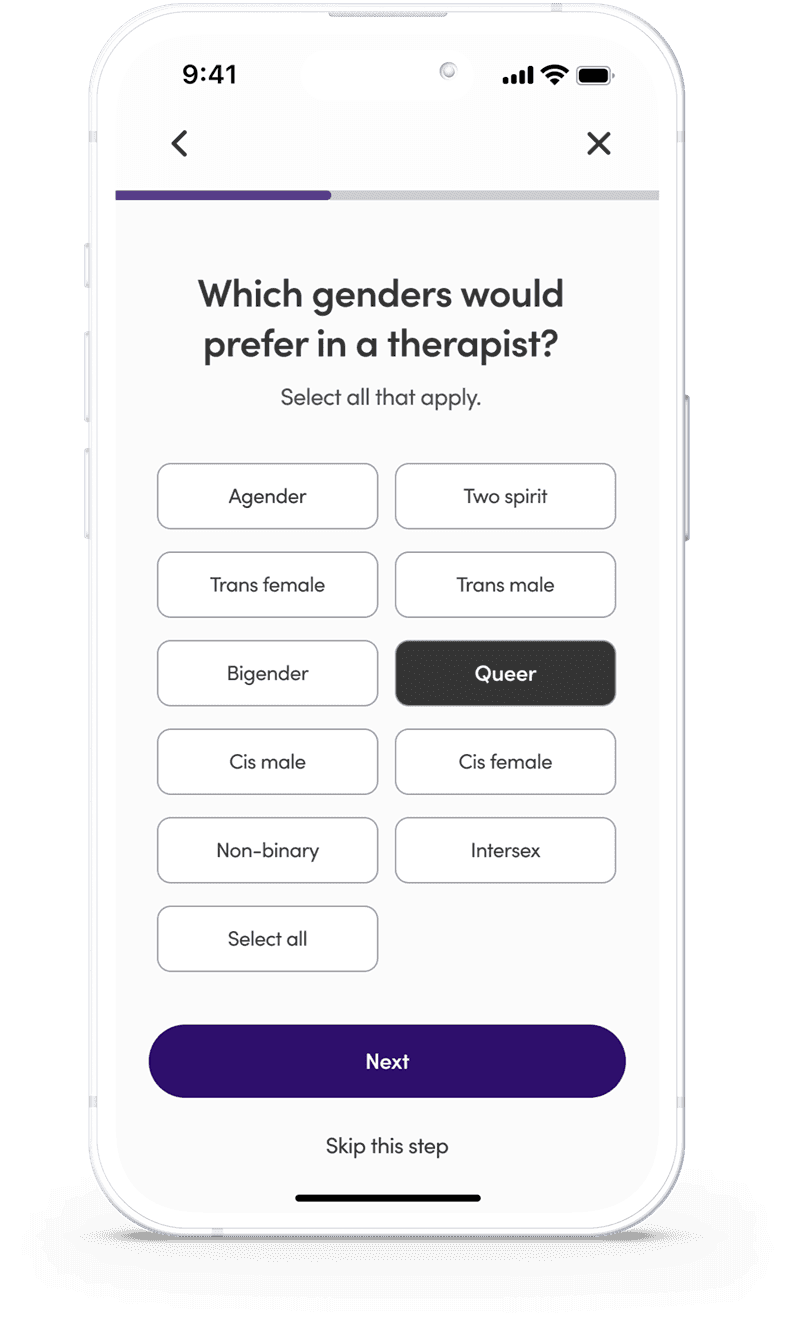
Choosing personal preferences
in the matching flow
SOLUTIONS
01
Specify personal preferences through a matching flow
02
Design the app with affirming language and stance
HYPOTHESIS
01
Specifying preferences can improve therapy outcomes
02
Inclusive language and design elements promote safety, trust and user comfort in the app
Insight Three
Users seek resources to inform their therapy choices
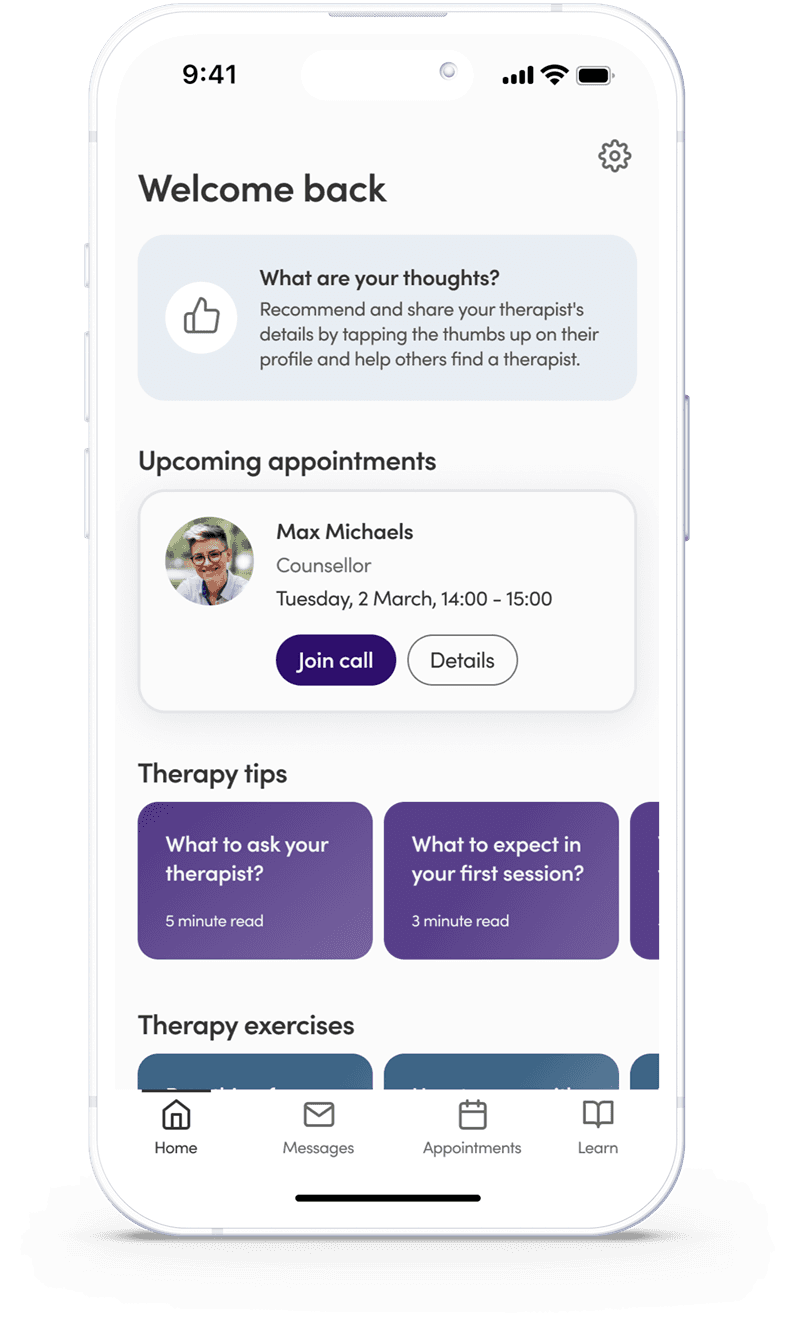
Therapy tips on the
welcome screen
SOLUTIONS
01
Provide resources to inform users about therapy
HYPOTHESIS
01
Resourcing users can help them make informed choices, ease therapy anxiety and increase app confidence
Design
CLOSER LOOK AT A DESIGN SOLUTION
Designing the therapist matching flow
The main solution is a matching flow to help users find a therapist by specifying preferences. The design of the flow aims to alleviate anxiety and cognitive burden, reducing stress and facilitating informed decisions.
Therapist matching flow
Card-sorting and Miller’s law
I used a card-sorting method with 4 users to identify their most important preferences. Then, with Miller's Law in mind, I broke down information into manageable sections, thereby reducing cognitive load, as shorter flows have higher completion rates.
No immediate sign up
Delaying sign-up until the end of the flow utilises loss aversion and gives users a greater sense of control, improving their experience.
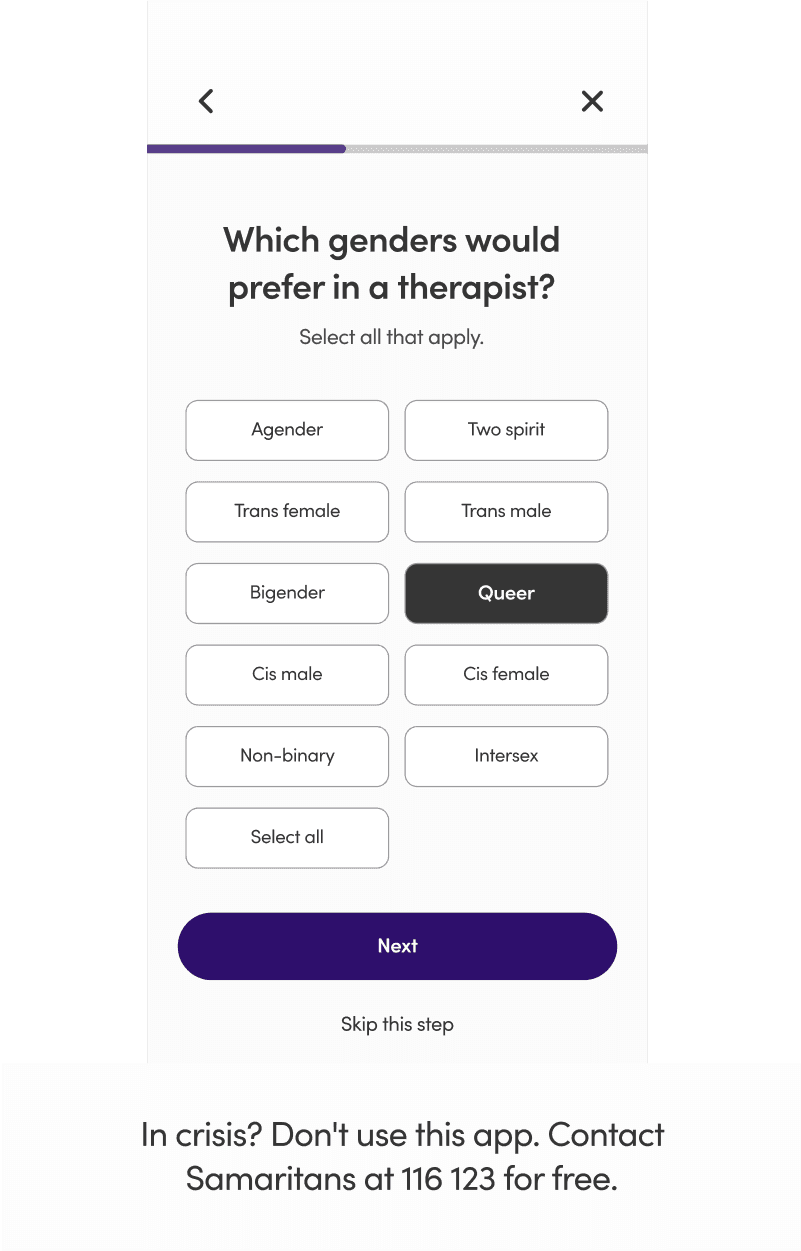
Emergency information for edge case
Edge case
For users in immediate need of support, such as those who are actively suicidal, emergency contact information has been provided as a precaution against unintended use of the product.
USER TESTING
3 improvements to the matching flow
After creating a MVP, I conducted guerrilla testing with 3 users. The main area of insight concerned the types of therapy interface.

Before
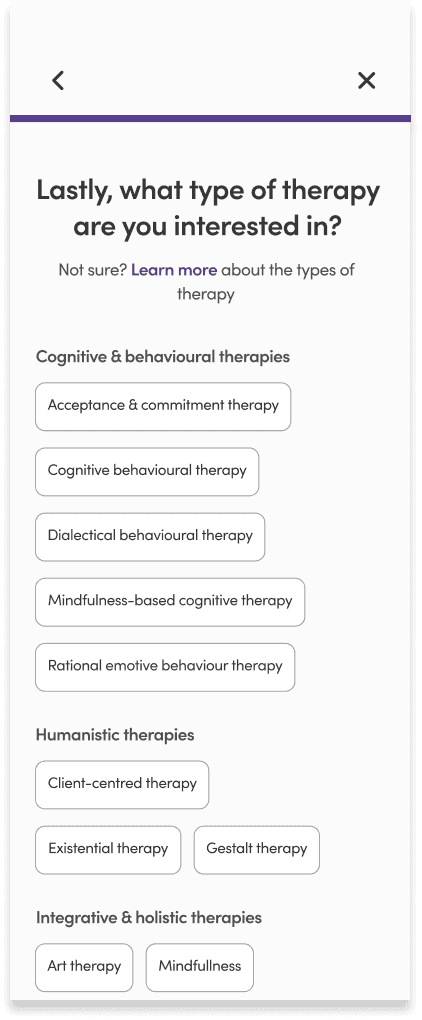
After
Endnote
REFLECTIONS & IMPROVEMENTS
AI could provide alternative solutions
As I thought about the difficulties of matching users with appropriate therapists, I considered using a chatbot with natural language processing to suggest therapists based on a user's specific needs. This could give the user more of a personalised experience.
Allow time for the project's foundations
Throughout the project I learned the value of exploring solutions thoroughly and in future would like to take more time to evaluate options before committing to a design solution. At the same time, I also learned that establishing a consistent design system early in the project saves time and energy that can be spent on other areas of the project.
Making an impact
Though I recognised the limited impact of this project, I still believe that bridging the gap between therapists and the LGBTQ+ community in even a small way could be hugely beneficial and make the process of finding a supportive therapist more accessible for those who need it.
Product




